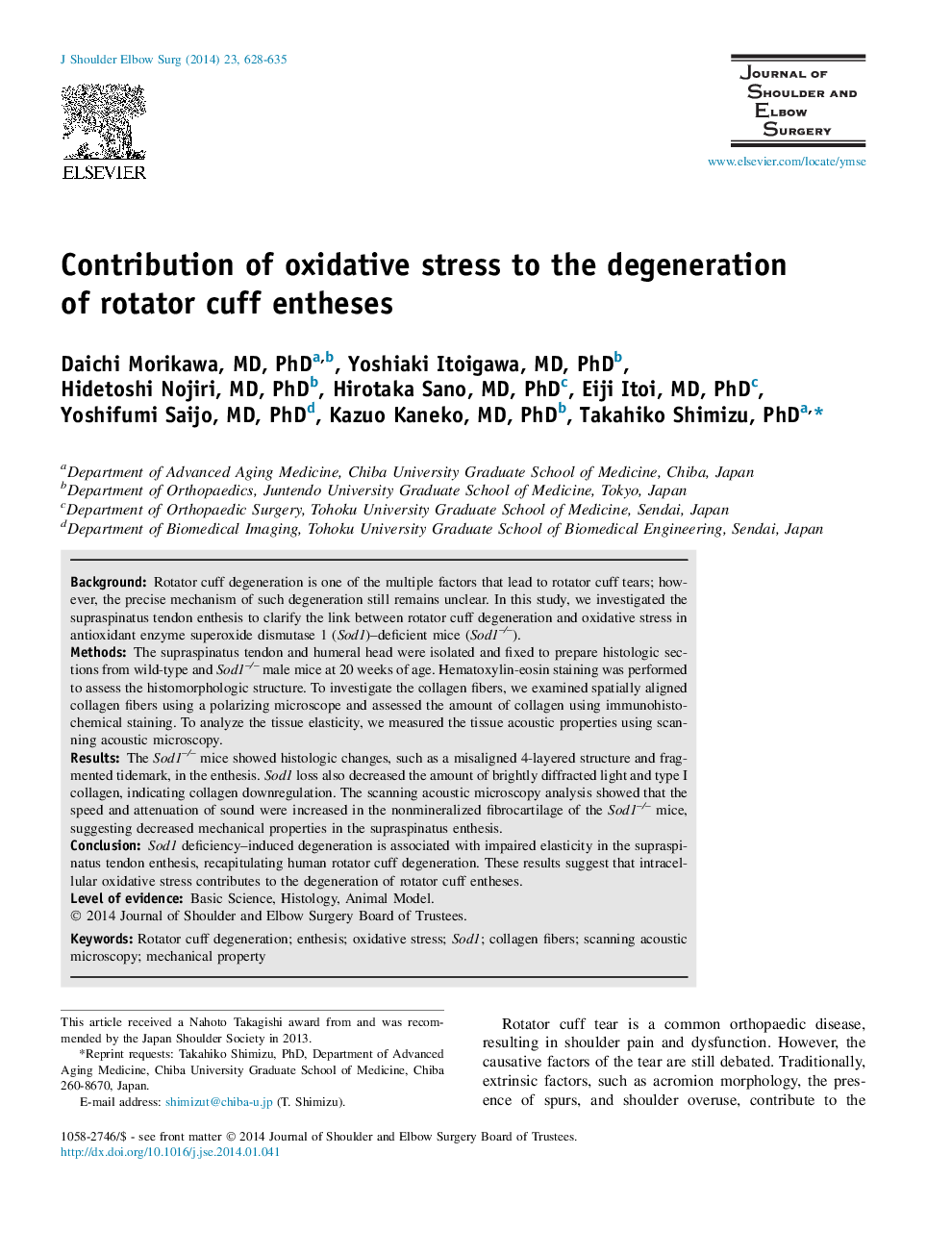| Article ID | Journal | Published Year | Pages | File Type |
|---|---|---|---|---|
| 4074422 | Journal of Shoulder and Elbow Surgery | 2014 | 8 Pages |
BackgroundRotator cuff degeneration is one of the multiple factors that lead to rotator cuff tears; however, the precise mechanism of such degeneration still remains unclear. In this study, we investigated the supraspinatus tendon enthesis to clarify the link between rotator cuff degeneration and oxidative stress in antioxidant enzyme superoxide dismutase 1 (Sod1)–deficient mice (Sod1–/–).MethodsThe supraspinatus tendon and humeral head were isolated and fixed to prepare histologic sections from wild-type and Sod1–/– male mice at 20 weeks of age. Hematoxylin-eosin staining was performed to assess the histomorphologic structure. To investigate the collagen fibers, we examined spatially aligned collagen fibers using a polarizing microscope and assessed the amount of collagen using immunohistochemical staining. To analyze the tissue elasticity, we measured the tissue acoustic properties using scanning acoustic microscopy.ResultsThe Sod1–/– mice showed histologic changes, such as a misaligned 4-layered structure and fragmented tidemark, in the enthesis. Sod1 loss also decreased the amount of brightly diffracted light and type I collagen, indicating collagen downregulation. The scanning acoustic microscopy analysis showed that the speed and attenuation of sound were increased in the nonmineralized fibrocartilage of the Sod1–/– mice, suggesting decreased mechanical properties in the supraspinatus enthesis.ConclusionSod1 deficiency–induced degeneration is associated with impaired elasticity in the supraspinatus tendon enthesis, recapitulating human rotator cuff degeneration. These results suggest that intracellular oxidative stress contributes to the degeneration of rotator cuff entheses.
